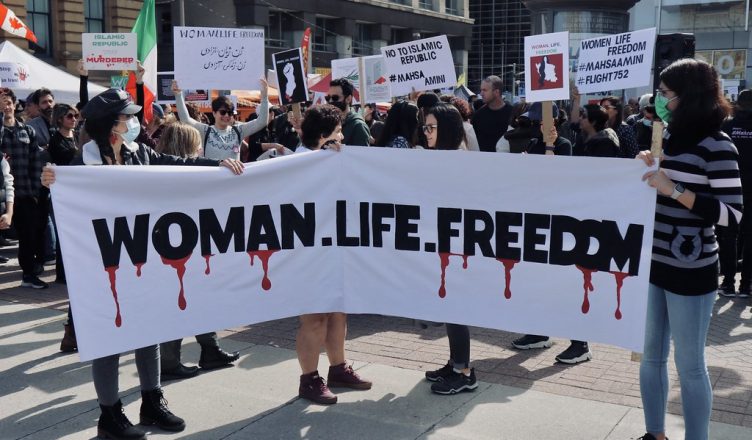This year began in Iran with the executions of two young men after show trials for being involved in the uprising against the theocratic regime. There were many demonstrations in many neighbourhoods of the capital city of Tehran. This was followed by the execution of two other young men. There was a demonstration outside the prison where they were murdered at Karaj near Tehran.
Demonstrations in other cities broke out after these four executions. Some of the slogans chanted at these demonstrations included “For every person killed, there are a thousand others behind him”, “Death to Khameini”, (the Supreme Leader of Iran), “We do not want the government that kills children,” and “Death to the Basij,” the repressive guards force that acts as the attack dogs of the regime. The demonstrations called for the end to the executions. Those killed by the regime were Mohammad Ghobadlou(22), Mohammad Boroughani(19), Mohammad Mahdi Karami and Seyed Mohammad Hosseini(both 23).
The clerical regime resorted to these executions after the killing in September of a young Kurdish woman, Mahsa Amini, by the morality police, who enforce the ayatollahs’ rules on behaviour and dress, particularly against women. This triggered huge demonstrations throughout Iran. These were labelled as “riots” by the regime, quick to spread the lie that they were instigated by the USA, Israel and Britain. In addition to those executed, 17 others have been sentenced to death. On top of this at least 519 demonstrators have been killed, including 71 children, and in response to the State violence 68 security personnel were killed by the crowds. Another 12,290 demonstrators have been arrested, with 111 facing death sentences.
In addition to the killings and arrests, the regime has relied on torture of prisoners to attempt to quell the unrest. It has turned on various celebrities , journalists, filmmakers and lawyers who have supported the protests. At least 84 journalists have been arrested.
The regime is terrified that the unrest will ignite even wider protests. There is widespread discontent about the brutality and repression of the security forces, mass unemployment, inflation rising to 50% a year, a water crisis, the non-payment of wages, precarious job contracts, and the corruption of regime officials. Even according to the regime’s statistics, 50% of the Iranian population are below the poverty line.
As we have reported, alongside the street protests have been strikes by teachers, steel workers and oil workers. However, the street protests in the main consisted of youth and students.
An indication of the loss of support for the regime was its failure to bring out large numbers for pro-government rallies at the end of last year.
Khameini threatened further death sentences and appointed the brutal thug Ahmad Reza Raden as police chief. This scumbag is noted for his determination to force women to wear the hijab, the headdress insisted upon by the regime.
However, this has not deterred women from continuing to defy the regime. In many cities some women are refusing to wear the hijab at all. The Iranian New Year began on 20th March with the residents of the city of Ekbatan chanting “Death to the Dictator” from their balconies. The regime riposted by bringing in new laws on the hijab, coinciding with the month of Ramadan.
On April 9th security forces stood at entrances to Tehran underground stations, refusing women wearing the hijab “incorrectly” or not all access to the trains. Radan warned that from April 15th women not complying with the hijab rules would be prosecuted. The commander of Tehran’s traffic police backed this up by saying that traffic cameras would be used to identify those who failed to obey the hijab rules.
When the schools and universities re-opened after the Iranian New Year ministers of education and of science warned staff and students to obey the hijab rules or be removed from education establishments. Despite this, there have been many floutings of these regulations.
More recently there has been a recurrence of the mass poisoning through chemical and gas attacks of female students in Shahriar, Bandar Ganaveh, Ashnoye, Amol, Shahin Shahr and Tabriz. There was also a poisoning at Tehran University. Those who suffered these attacks complained of strange chemical smells.
As many as 7,000 female students may have been poisoned, and 500 of these hospitalised. The attacks may be the work of hard-line Islamists, opposed to girls and young women being in education at all. In response many parents came out on the streets to protest against the slow response of the authorities to the poisonings. In some instances, these demonstrations were attacked by security forces with the use of tear gas. The poisonings are continuing, the last one just a couple of days ago.
Khameini has called for the death sentence for those responsible for the poisonings. A hundred arrests have been made with the authorities seeking to blame foreign powers and the People’s Mojahedin , a leftist guerrilla group. These arrests are almost certainly an attempt by the regime to divert attention from its own failure to act.
As the economic situation continues to deteriorate, Khamenei is now calling for increased privatisations. This risks causing further discontent among the working class, spilling out on to the streets to link up with the ongoing protest movements.
We look forward to the end of the foul regime in Iran, a regime based on repression and misogyny, a regime that protects the interests of the ruling class. Khamenei should remember the fate of other rulers. Like Mussolini, he might find himself and his associates like Radan hanging from lamp posts.

